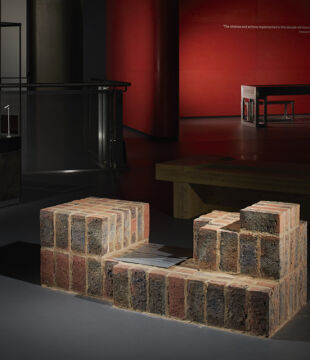
Details
Location: Liverpool
Brick Manufacturer: Michelmersh Brick Holdings PLC
Brick Names: Charnwood Blend (Light Victorian, Ashby Red), Charnwood Dark Red Headers
Architect: BDP Architects
Brickwork Contractor: Laing O'Rourke
About the project
Bramley-Moore Dock has undergone a remarkable transformation, emerging as the new home for Everton Football Club and setting a new standard in stadium design. The stadium has revitalised a historic dockyard into a state-of-the-art football venue, blending heritage and modernity while spearheading urban regeneration.
Designed by MEIS Architects and delivered by BDP Pattern, the 52,888-seat stadium not only enhances Everton’s sporting legacy but also significantly contributes to the local economy, projected to inject £1 billion and create 15,000 jobs.
One of the stadium’s most striking features is the South Stand, known as the ‘blue wall’ - an imposing, single-tier stand accommodating over 14,000 passionate Evertonians. This design creates a dynamic and immersive matchday atmosphere, maintaining a strong connection between the pitch and supporters. The proximity of the stands to the playing surface echoes the intimacy of Goodison Park, amplifying the energy of the crowd. The stadium’s brickwork is an homage to the renowned Archibald Leitch latticework of Everton’s former home, seamlessly weaving the club’s history into its contemporary identity.
The architectural language draws inspiration from the site’s historic brick warehouses, with handmade bricks forming warm, tactile facades that soften the stadium’s monumental presence. Michelmersh Legacy products from Charnwood were selected for their ability to harmonise with the restored Grade II-listed Hydraulic Engine House while complementing the other materials used throughout the site. This considered approach ensures a cohesive aesthetic, blending the new development with its historic context.
Functionality and inclusivity are at the heart of the design, with state-of-the-art facilities making it one of the UK’s most accessible stadiums. Features include 279 wheelchair positions, sensory rooms, faith spaces, and gender-neutral toilets, ensuring a welcoming environment for all fans.
The complex engineering challenges of the site - originally submerged - were met with innovation and precision. Laing O’Rourke led the construction, infilling the dock with 480,000 cubic metres of sand to stabilise the ground. Sustainable practices were integrated at every stage, including off-site manufacturing, advanced digital design, and the reuse of 95% of site materials. The extensive use of prefabricated components enhanced quality control and minimised on-site disruption. Solar panels and energy-efficient systems further reduce the stadium’s carbon footprint, exemplifying a progressive approach to sustainable stadium construction.
BDP Pattern’s Architect Director, Jon-Scott Kohli, reflected on the completed project:
“After years as a digital model and then a construction site, the stadium has finally become what it was designed to be - a home for the Everton family. The warm glow of the handmade bricks and the imposing South Stand exemplify the careful craftsmanship and attention to detail that define the project. It’s a proud moment for everyone involved, and I believe this stadium will soon be recognised as one of the world’s great football venues.”
The new Everton Stadium at Bramley-Moore Dock is not just an arena but a landmark, a bold chapter in Everton’s history and a transformative presence on Liverpool’s skyline. Ready to welcome fans, it stands as a symbol of the club’s commitment to community, heritage, and the future of football.















